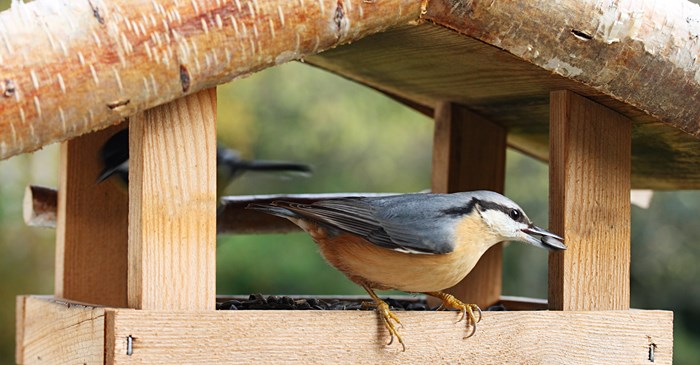Unfortunately, there is no health inspector for birdfeeders. So although you wouldn’t expect your family to eat at a table or counter covered with mold, those who neglect to clean feeders expect their bird guests to dine in just such unsanitary conditions. Many people do not realize that dirty feeders put our feathered friends at risk of contracting diseases with scary names like “Trichomoniasis.” Without a thorough cleaning about every two weeks, your feeders can be host to a wide array of fungi and bacteria, causing your once treasured beauties to quickly become diseased and even die.
Gathering in flocks, birds can pass an infection on to their compatriots, just as humans spread a cold or flu, and just about as fast. In winter, or in rainy seasons, foods that are left out and get wet can develop mold easily, so your cleaning ritual may need to be more frequent at these times or if you live in a damp climate zone. The National Audubon Society recommends cleaning every two weeks with a solution of 9 parts water to one part bleach, or to retain the rich color of wood feeders, you could use vinegar instead of bleach.
Use scrub brushes to clean each feeder thoroughly and consider placing several feeders around your yard to avoid overcrowding which will speed the spread of disease. It may take some elbow grease to remove the mold and bacteria that inhabit the nooks and crannies, perches and portals of feeders, but the birds, who give you hours and hours of pleasure with their song and color, deserve to dine safely. And don’t forget to rake up and remove any leftover seeds and hulls. The disease-causing bacteria can live for hours, even days.
Also, consider using an easy-to-clean platform feeder with fewer moving or concealed parts and cavities. Its roof provides shelter from the rain and wet weather.
Do you want the birds in your yard to look as vibrant, alert, happy and healthy as the day they were born? Pay attention to the cleanliness of your feeders and they will thank you with their spirit-lifting song.
